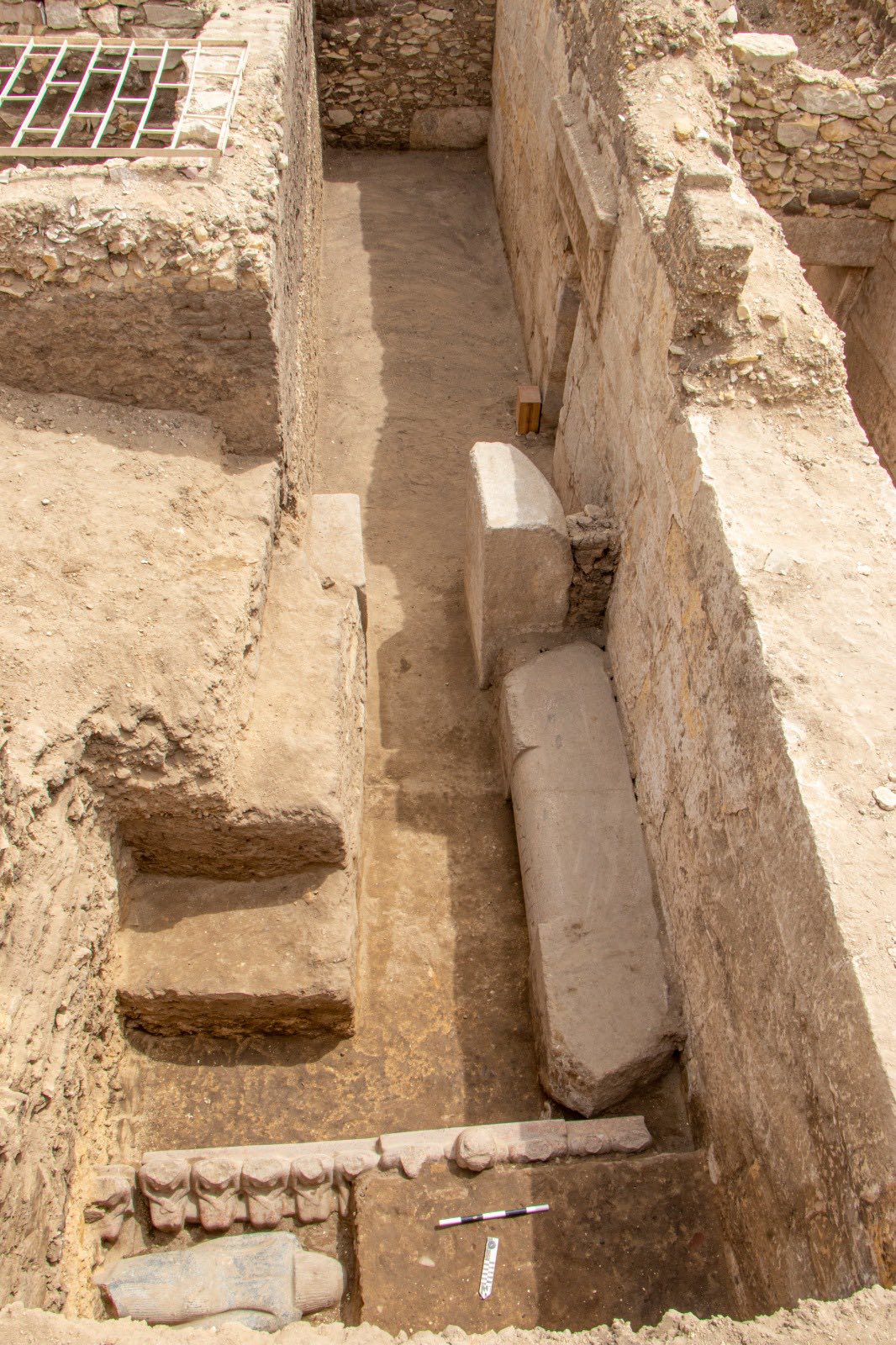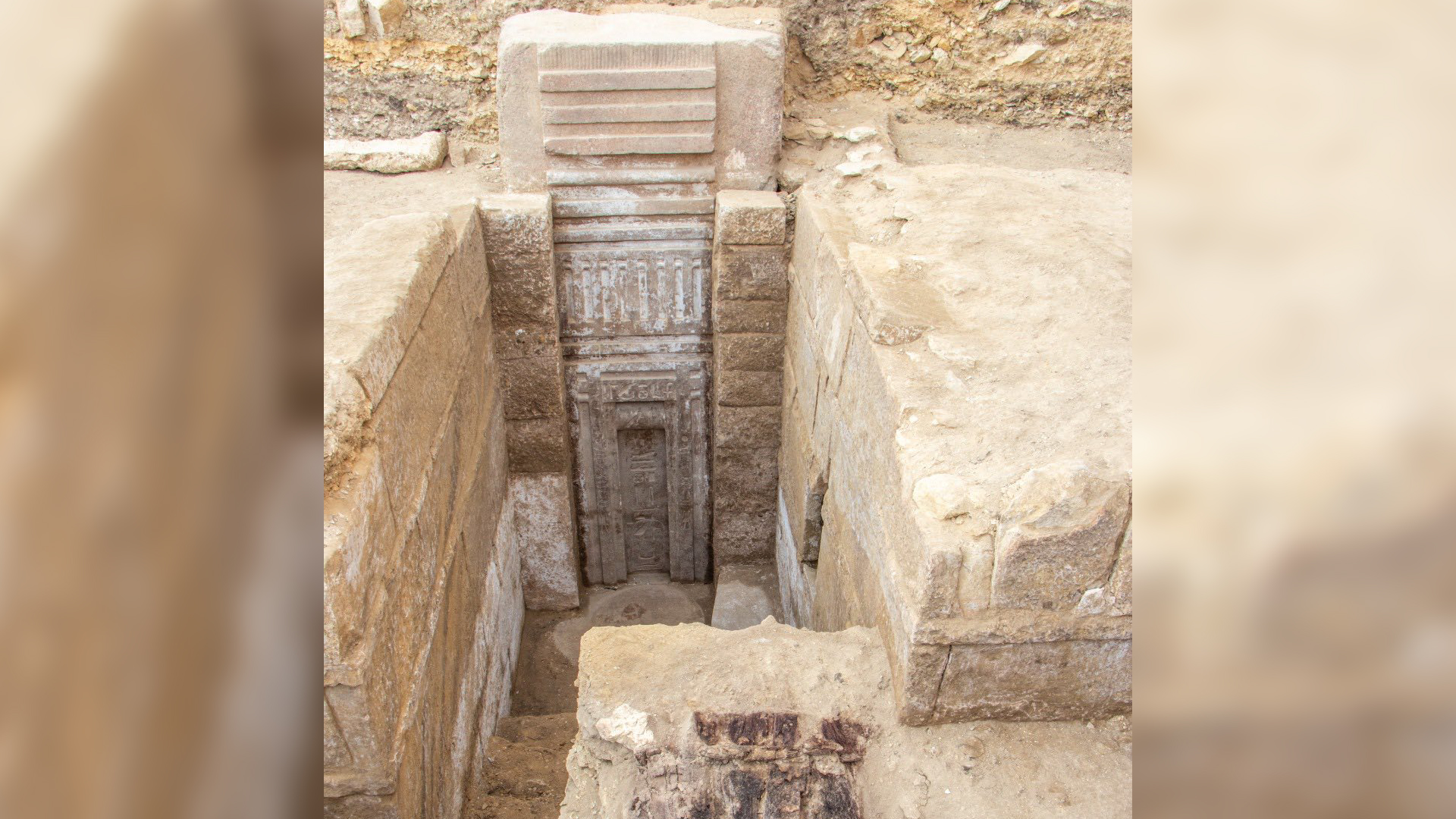Archaeologists in Egypt have discovered the 4,400-year-old tomb of a prince whose burial has a giant “false” pink door to enable souls to enter and exit.
The tomb belongs to Prince Userefre, also spelled Waser-If-Re, the son of King Userkaf, also spelled Wserkaf a pharaoh who reigned around 2465 to 2458 B.C. during Egypt’s fifth dynasty (circa 2465 to 2323 B.C.).
The newly discovered false door has inscriptions that say that he was a “hereditary prince,” as well as a “judge,” a “minister,” a “governor” of two regions, and a “chanting priest,” the statement said.
“Previous to this discovery, we didn’t even know he existed,” Ronald Leprohon, professor emeritus of Egyptology at the University of Toronto who was not involved with the excavation, told Live Science in an email. Leprohon noted that the prince’s name may have meant “Re is powerful.” Re (also spelled Ra) was a sun god in ancient Egypt.
The giant false door, which is made of pink granite, is about 14.8 feet (4.5 meters) high and 3.8 feet (1.2 m) wide, the Egyptian Ministry of Tourism and Antiquities said in a statement. In ancient Egypt, false doors are commonly seen in tombs, as the Egyptians believed that the souls of the deceased could enter and exit through them, according to the Metropolitan Museum of Art in New York City.
The door’s immense size and construction from pink granite is remarkable, experts said.
“This is the first time that a false door like this was found in Saqqara” Zahi Hawass, a former antiquities minister who is leading excavations at the tomb, told Live Science in an email. The man’s status as a prince with important titles explains why a false door like this was built for him, Hawass said.
Melanie Pitkin, a senior curator at the Chau Chak Wing Museum at the University of Sydney who was not involved with the excavation, said in an email that “at this time, false doors are most commonly made from limestone, which was a ubiquitous resource in Egypt. Since pink and red granite was quarried and transported from Aswan [about 400 miles or 644 km south], it was more expensive and reserved for royalty and the high elite.”
A red granite offering table was found near the false door. Leprohon noted that in ancient Egypt, people sometimes left food offerings on offering tables and believed that the deceased could “magically” eat “the offerings deposited on the so-called offering table in front of it.” In reality, it was the funerary priests and their families that actually ate the food, he noted.
Statue of an old king
The tomb appears to have been reused at some point during the 26th dynasty (circa 688 to 525 B.C.). At this time, a statue depicting King Djoser (reign circa 2630 to 2611 B.C.) along with his wife and children was placed within it, the statement said. Djoser ruled during the third dynasty (circa 2649 to 2575 B.C.) and built ancient Egypt’s first known pyramid, the step pyramid at Saqqara. Analysis of the statue and its design indicates that the statue was made during king Djoser’s rule and may have been from the step pyramid itself or a building near it. Why it was moved into the tomb at that time is unclear, the statement said.
The statue shows a seated Djoser putting his right “hand with love on one of his daughters,” while his queen is to his left and “is also putting her hand on one of her daughters,” Hawass said. In front of them is a black granite statue that also dates to the third dynasty, Hawass said.

Ann Macy Roth, a clinical professor of Egyptology at New York University who was not involved with the excavation, said that the sculptures from the third dynasty are remarkable as “there is very little sculpture from that era.” Roth noted that prior to this discovery, “I can only think of one piece that represents a woman,” so the statue depicting Djoser’s wife and daughters is extraordinary.
Excavations are ongoing, and the prince’s burial chamber has not yet been found. “We only found a part of the tomb,” Hawass noted.
Lara Weiss, the CEO of the Roemer and Pelizaeus Museum in Germany who was not involved with the excavation, said that the discovery of the tomb “adds to the growing evidence that Saqqara remained a prestigious burial site during the Fifth Dynasty, even as royal tombs moved to Abusir.”
She told Live Science in an email that “it’s “a nice puzzle piece for understanding a transformative moment in ancient Egypt’s political and religious history — between the centralized power of the Fourth Dynasty and the perhaps more diversified elite power structures of the Fifth.”
Ancient Egypt quiz: Test your smarts about pyramids, hieroglyphs and King Tut
